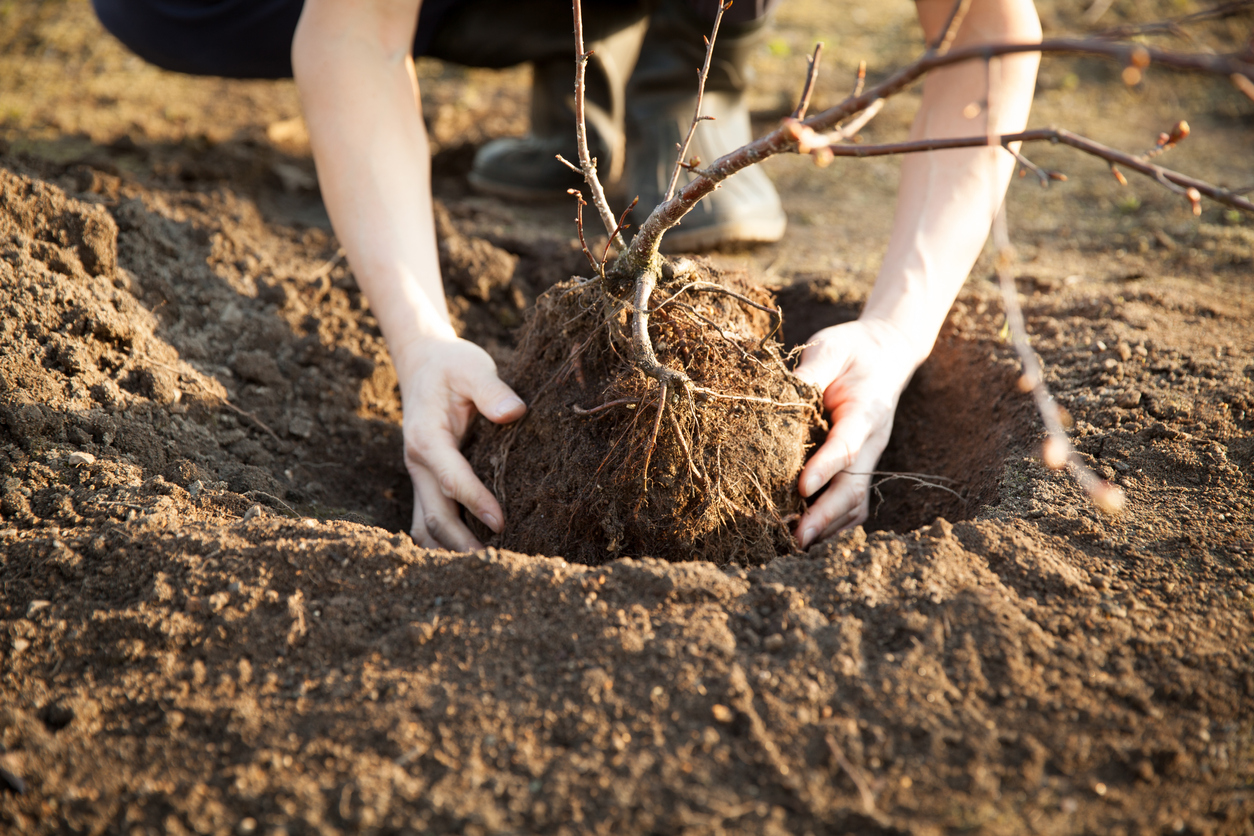
Planting a bare root cherry tree
Remember, your cherry tree is going to be full-grown someday. Keep in mind several things when choosing a site:
- The tree will be a landscaping asset, so you’ll want to show it off.
- The tree may run into utility wires, underground cables and pipes, and irrigation systems if they’re too close.
- The roots could spread to nearby sidewalks, foundations, or driveways.
- The tree might block your view of something else when it’s mature.
- Neighboring trees might block sunlight to your cherry tree as they grow.
To avoid these types of problems, plant your cherry trees away from potential obstacles. Your tree’s mature spread should be roughly its height at maturity.
Space sweet cherries 35 to 40 feet apart and dwarfs 5 to 10 feet apart. For sour cherries, space them 20 to 25 feet apart and dwarfs 8 to 10 feet apart.
If you don’t have the right soil for growing a cherry tree, you can build a raised bed for it. Just be sure to make it wide enough and deep enough to accommodate the growing tree, and be sure the container has plenty of good drainage. Refresh the soil with fresh gardening soil in the spring and fall.
-
Tip: Dwarf cherry trees can be grown along wires, fences, or walls in a method known as espaliering. Slowly adjust the branches so they grow in a completely horizontal shape, which promotes air flow and exposure to sunlight, and makes them easier to pick and cover with bird netting.
Do you plant your cherry trees in the ground or in raised beds? How do you find the perfect site for your cherry trees? Please share your best siting tips for cherry trees.


 Previous
Previous

